Comments from the Chair
Democracy in action!
Alamo Executive Committee elections are complete. Wendell Fuqua's story (below) has the results. Thanks to all who participated in this democratic process to provide volunteer leadership to the local group of the Sierra Club. This is one of the important strengths of the Sierra Club. Our foundational strength is our volunteers. We always need more volunteers at every level--local, state and national--in the Sierra Club. Our own local group needs Program Director, Membership Chair, Outings Chair, Communications leaders, Conservation activists. Whatever way you can help, we need you!
Our political commitee needs volunteers! 2018 will be a very busy year for environmental advocacy in political elections. Darby Riley leads this effort and needs your help! Primaries are approaching and there are many good, not just bad candidates to choose from for a change. Fall elections will be critically important for our environment, and at all levels. But this starts with the primaries! We need to learn about the candidates, and where they stand on our issues, so we can all make informed choices!
Lone Star Chapter Executive Committee elections are complete. Thanks also to those voting. Elections are vital to our SC democracy as well as our national democracy. Without voter engagement, our system fails, in SC as well as our government. It is vital to have a SC that represents all of us, and a government--at all levels--that does the same.
San Antonio climate plan
The Joint COSA-UTSA-CPS CAAP (City of San Antonio, University of Texas at SA, City Public Service Energy Utility, Climate Action and Adaptation Plan) is off to a slow start and needs constant NGO (e.g. Sierra Club) input and pressure to further community engagement and obtain meaningful results. I encourage you to get involved in this important effort!
Dismantling of environmental protections continues
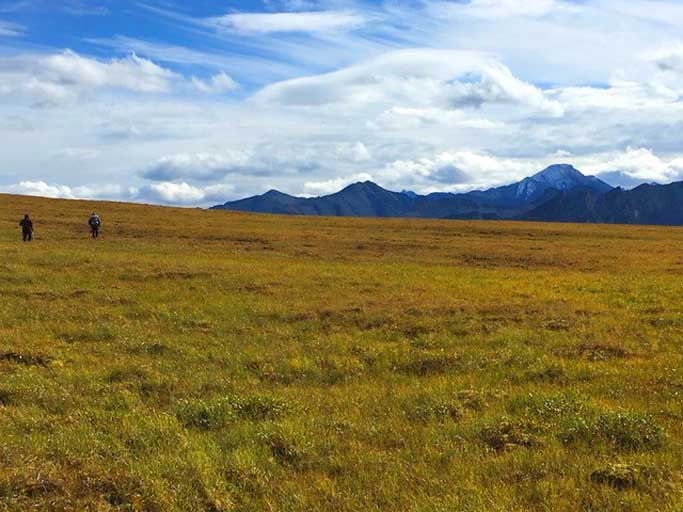
The recently passed tax bill includes language opening the Alaska National Wildlife Refuge (ANWR) to oil drilling. This refuge was established by President Eisenhower in 1960, protecting over 19 million acres of Alaska North Slope lands between the Brooks Range and the Arctic Ocean. This land has been called “America’s Serengeti” because like that great wildlife area of Africa, the North Slope is home to vast and diverse collections of wildlife, including a large caribou herd, and many migrating bird species that nest there in summer and spread over lower latitudes in colder months.
The oil industry has worked nearby at Prudhoe Bay for decades, but not been--until now--allowed to move eastward into ANWR. After decades of successful resistance to this industry attempt to destroy major parts of “America’s Serengeti”, the battle appears lost. However, we should all speak out in protest at this continued savaging of our wild areas, especially at a time when fossil fuel exploration everywhere needs to STOP NOW, and the switch to renewable energy begun in earnest. I have hiked in the Brooks range of ANWR and seen some of its incredible wildlife and diversity. We must hope that litigation will succeed in protecting ANWR now.
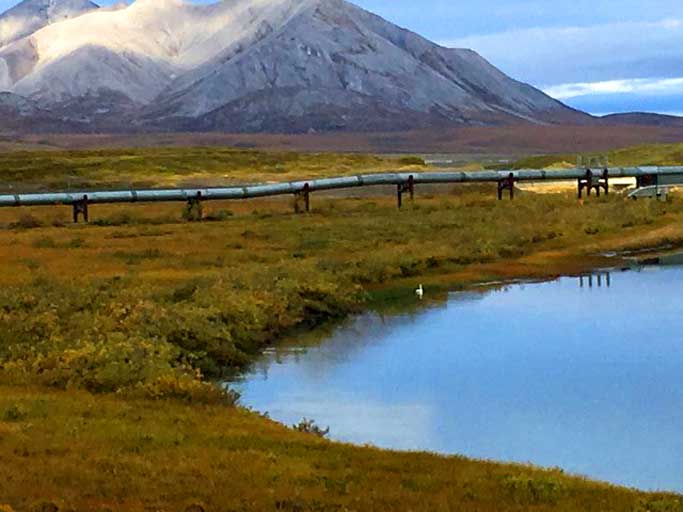
The Trump Administration also seeks to open virtually the entire U.S. coastline to oil and gas exploration. The seas around Alaska are included, where a spill will be impossible to clean up, as even government officials acknowledge. Florida’s Republican Governor Scott spoke out against drilling’s potential impact to his state’s tourist industry, so of course the proposal has been modified to exclude Florida. Democratic Governors from other East and West Coast states have not had similar persuasive impact with this Administration...
The Trump Wall is proposed to run right through our own South Texas Santa Ana Wildlife Refuge. This will be devastating to both people and wildlife. For more on this issue, read Santa Ana National Wildlife Refuge Turns 75 - Trump Wants to Build A Wall Through It.
On the local front
Our local leadership needs major change. COSA City Council is much much better thanks to our political efforts last spring helping to elect a new Mayor and several new Council members. There is an important County Commissioner race for Precinct 2 pitting long-time incumbent Paul Elizondo against newcomers Queta Rodriguez and local environmental activist Mario Bravo. A change in the Commissioners Court could bring changes to growth, development and services in our Bexar County.
AACOG, our Alamo Area Council of Governments, continues to function through apology, denial and talk concerning our worsening air quality, while accomplishing almost nothing. I have attended their meetings for years and felt progressive frustration. I have high hopes for the new involvement of CD1 Councilman Roberto Trevino. The AACOG bureaucracy seems to provide more obstruction, however, than support. They seem to be happy the current EPA has so far skirted the law and NOT designated our region as in non-attainment for ozone. That failure may be good for industry, and passive governments, but does nothing for our health, our children, our elderly, our outdoor workers. And without non-attainment we lack the regulatory authority (if AACOG had the spine to use it) to actually make positive progress on improving our air, instead of making excuses about how it’s not our fault etc.
San Antonio has seen two important changes in local media coverage. Last fall, KLRN dropped the long time weekly Rick Casey show.
This January, after looking repeatedly for Brendan Gibbons articles in the SA Express News, I found that he has left SAEN. These changes have diminished local news coverage--and especially environmental coverage--in major ways. I urge you to look to our important alternate media online source, the Rivard Report. Thankfully, it continues to provide Brendan’s important local coverage. Here's an example of Brendan’s work, published on Jan. 25th: Abbott Gets EPA To Delay Answer On San Antonio’s Air Quality. The Governor wants to avoid a designation of poor air quality for San Antonio, though public health advocates say the city's air clearly doesn't meet standards. This is why we need quality reporting on our government's efforts to harm our health.
We need a new projector
At our monthly Lions Field Events, we often feature films about environmental issues. However, our old projector and laptop are kaput, and we need replacements.
If you have a digital projector or laptop w/DVD drive you can donate, they would enable us to continue our film programs. Please contact Terry Burns if you know of a potential donor.
Plan for the future
Our regional planning organizations are also in need of major change. The Alamo Area Metropolitan Planning Organization is still too much focused on roadways and their expansion. I have attended a number of hearings regarding joint TxDOT/AAMPO/COSA proposals for congested area modifications. I continue to see expansion plans for more asphalt and little else. The extreme of this, perhaps, is the proposal for a double decker I-35 coming into SA from Austin! I continue to provide comments that support smart growth, and smart streets, with every roadway modification including plans for safe bicycle and pedestrian travel, and priority given to mass transit, whether through managed lanes, tolls, rail or some other combination. All data clearly show adding asphalt alone never provides more than brief improvements in congestion, while doing nothing to address our worsening air quality.
I have attended the AAMPO Bicycle Mobility Advisory Committee (BMAC) which seems to be a very good group, and needs our support and involvement. Surely we have among our thousands of members bicycle enthusiasts who want to be involved in our ambitious regional bicycle trail plans. This BMAC has excellent leadership by our own CD 5 Councilwoman Shirley Gonzales and needs our support.
There is a similar AAMPO PMAC (Pedestrian Mobility Advisory Committee) that I have not yet been able to attend. I welcome concerned walkers in Alamo SC to attend and give input!
It is my hope that a robust CAAP will result in not just COSA and CPS action to improve our resiliency in the face of Climate Change, but also new, more effective action from our local regional planning agencies like AACOG and AAMPO.
by Terry Burns, M.D., Alamo Group Chair
Film Night and Discussion of 2018 Priorities

At our February General Meeting, we will be screening A Fierce Green Fire: The Battle for a Living Planet. Afterwards, we will discuss the Alamo Group's priority issues for the coming year. This program was originally scheduled for January but weather forced its cancellation.
Tuesday, February 20th
6:30 p.m.
William R. Sinkin Eco Centro, 1802 North Main Avenue
Map
A Fierce Green Fire is the documentary of record on the environmental movement. You can view a trailer and extensive background information on the film's website. We will be viewing the introduction with some history, toxic waste and Love Canal issues, Environmental Justice and Human Rights, and Climate Change segments.
Even those who’ve seen the video previously will see the film’s project anew, in the context of ongoing efforts of the Trump administration to dismantle the EPA and other environmental protections from within.
"The most thorough, expansive, and inclusive documentary film on the rise of modern environmentalism."
Paul Sutter, Associate Professor of History, University of Colorado
This event is free and open to the public.
The Worst Weather in the World
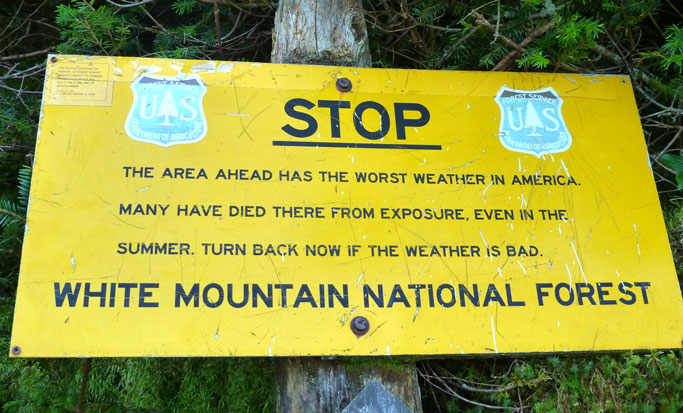
Mount Washington in White Mountain National Forest, New Hampshire, has a fair claim to this title, due to a combination of wind speed, temperature and precipitation extremes (Antarctica and Arctic regions don't get nearly as much precipitation). The elevation is a modest 6288' (though the highest in the eastern US). But the annual snowfall averages 280" (over 23').
It once held the world wind speed record, 231 mph, measured in 1934; that is still the record for surface wind speed not involving a cyclone. The record low temperature here is -50 degrees F, and the record wind chill value is -102.6 degrees F. Here's the Wikipedia article.
Mount Washington is in the Presidential Range and was known as Agiocochook to some local Indian tribes. The Appalachian Trail (AT) runs across a sequence of peaks in the range. You wouldn't want to be hiking here in a blizzard with high winds, but summers can be lovely. You can see in the pictures below that the summits are all alpine zone; the tree line is well downhill.
I was here August, 2013. After seeing the sign in the picture above I encountered a bunch of families maybe hiking up to Washington and taking the cog railway back down. There were children in summer clothing and only the parents had daypacks; surely too small for water, snacks, a first aid kit and warmer clothing and rain jackets for all of them. It can snow here any day of the year! But the weather was perfect.
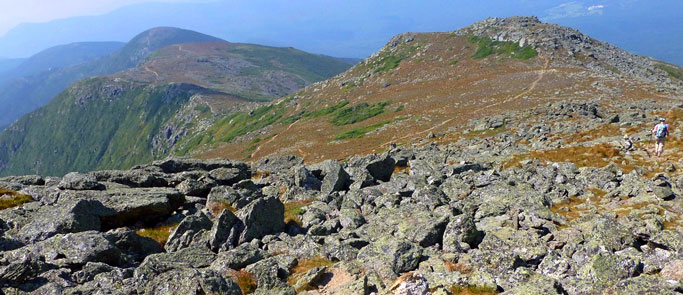
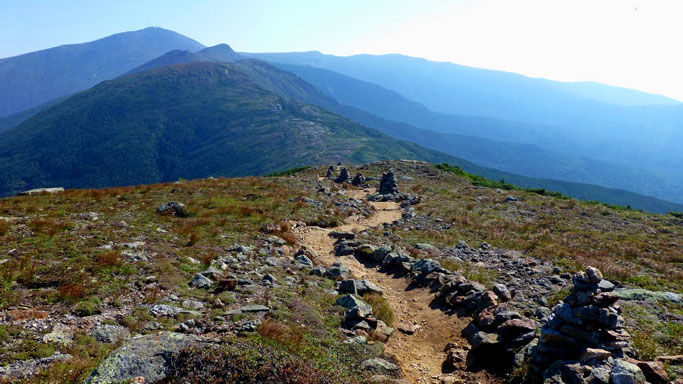
Hiking, camping and transportation
There are lots of popular hiking routes, particularly loops, in the Whites. They run up to the peaks and along ridges or just across lovely meadows with views of waterfalls and lakes. The Appalachian Mountain Club (AMC) has done an excellent job of trail stewardship and maintenance and conservation advocacy, and runs a bunch of huts with bunks, private rooms, and good food, and also their own campgrounds. Here is their lodgings/campgrounds page. Hikers can always stop in at the huts for coffee and fresh baked goods.
AMC has a shuttle bus service between trailheads. One adventurous option is the Presidential Traverse; 23 miles across ten of the peaks, with nights at AMC huts, and then take a shuttle back around to your car. You could also traverse the whole of the Whites on the AT, about 100 miles. This section of the AT is rated one of the toughest but is also a favorite. The section through the Bigelow Range in Maine, 80 miles northeast, is also challenging and spectacular; see an article in the September 2017 issue of this newsletter. Pictures of Mt Katahdin, the northern terminus of the AT, were included in the October 2016 issue.
AMC's guidebooks and maps are the gold standard, covering the Whites and also all of Maine. There are also on-line resources, and a book on canoeing routes, and one on best backpacking routes around the entire northeast.
There is a cog railway up Washington and a paved road. At the spacious summit visitor center you can buy food and visit the weather station. And you can buy the bumper sticker attesting that your car has been there.
There are many US Forest Service campgrounds, some for which reservations are possible. The most usable airport is Manchester. Sizable towns nearby include Gorham to the northeast, Conway to the southeast, and Lincoln to the west.
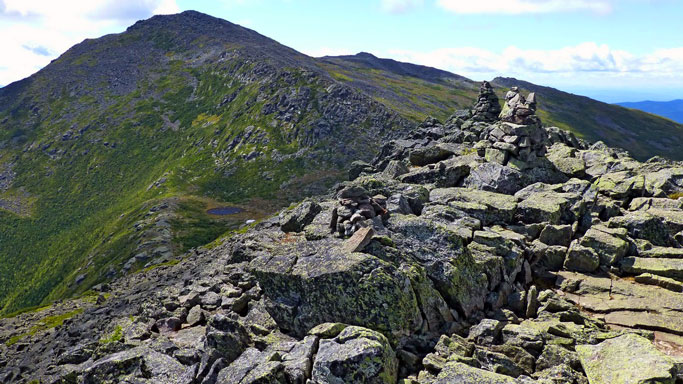
by Kevin Hartley, Alamo Group Outings leader
Climate Action Plan - Meet & Greet
This month, our Lions Field event will be a Meet & Greet focusing on climate change and the city's Climate Action & Adaptation Plan. This is a reprise of our successful January event. Come share your ideas on how to make this process work for all!!
Thursday, February 22nd
6:30 p.m.
Lions Field Adult Center, 2809 Broadway @ Mulberry
Map
This event is free and open to the public.
Alamo Group Executive Committee Elections
The Alamo Group Executive Committee welcomes one new member and two returning members, following the club’s annual fall election to select replacements for the three ExCom positions that come open each year. Joan Cunningham is the new member. Alan Montemayor and Terry Burns are the returning members. Thanks to all who voted (somewhat less than 1.5% of members, and similar to state LSC elections...).
Cunningham replaces Dave Wells on the board. The vote tally in a field of four candidates was 34 for Burns, 34 for Montemayor, 27 for Wells, and 18 for Cunningham. However, Wells stepped down from his position shortly after the election, citing mounting work commitments, and Cunningham graciously agreed to move into his position.
Cunningham is a retired epidemiologist who received her doctorate from the University of Texas Health Science Center in Houston. She spent much of her medical research career at MD Anderson Cancer Center in Houston and at the University of South Carolina in Columbia. One of her key interests is in population control. “Particularly as population continues to grow unchecked,” says Cunningham, “human societies and the natural world are increasingly intertwined, with the natural environment now more at risk than ever.”
Montemayor is a retired mechanical engineer and has been a Sierra Club member since 1983. He has been an ExCom member for the past three years. Burns is a life member of the Sierra Club since the early 1970s, and a retired pathologist. He has been an ExCom member for the last five years, and ExCom Chair for the last three years.
The new and returning ExCom members officially begin their duties immediately.
by Wendell Fuqua, Executive Committee member
Preserving a Local Wetland
El Dorado Lake is located on fourteen acres of private land owned by the El Dorado Homes Association near the corner of Leonhardt Road and El Sendero Street. The “lake” is actually comprised of two shallow ponds averaging one to three feet in depth. The ponds cover approximately three acres of land and were once part of a deeper, larger body of water created by a dam and spillway constructed prior to the development of the neighborhood in 1969. The dam’s height was later reduced for safety reasons, and gradual silting resulted in the shallow, marshy ponds that are present today.
The primary source of the water in these ponds is runoff from the streets and drainage easements in the El Dorado and Valencia neighborhoods. The ponds remain inundated during periods of relatively severe drought. They are essentially a wetland that attracts waterfowl such as ducks, herons, egrets and the occasional kingfisher. The ponds are not stocked with fish but several turtles can be found on any given day. Tree frogs are abundant. All of this activity attracts hawks and owls.
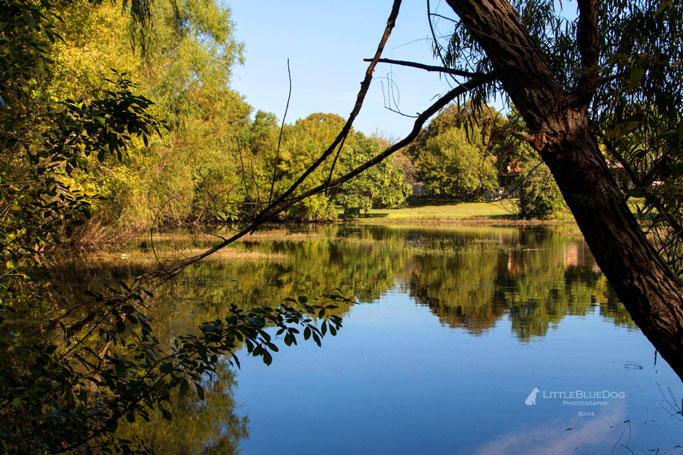
El Dorado Homes Association is a non-profit corporation and non-mandatory homeowners association tasked with maintaining the Lake property. We rely on our members to fund the cost of keeping the lake clean and managing the landscape. This has become more and more challenging over the years as residents age and participation in the association continues to decline.
The association is currently looking for ways to revive neighborhood interest and preserve the property as a wetland area. All current funding for the lake property goes to maintaining the equipment that is needed to keep the vegetation under control. Help is being sought from local organizations for funds to improve wildlife habitat or offer programs for the students of nearby El Dorado Elementary School. Anyone wishing to visit the Lake is welcome to call Ezra Johnson, President of El Dorado Homes Association, at 210-264-8860, for a guided tour.
by Ezra Johnson

Outings: The Call of the Wild
Visit the Alamo Sierra Club Outings page on Meetup for detailed information about all of our upcoming Sierra Club Outings.
The Alamo Sierran Newsletter
Richard Alles, Editor
Published by The Alamo Group of the Sierra Club, P.O. Box 6443, San Antonio, TX 78209, AlamoSierraClub.org.
The Alamo Group is one of 13 regional groups within the Lone Star Chapter of the Sierra Club.
Keep your email address current!
Send updates to Loyd Cortez, providing your name, address and membership number (if known).
Changed your mailing address?
Have you moved? Let us know by sending your old address, your new address and your member number (look on the upper left corner of your mailing label) to: address.changes@sierraclub.org.
Go online for the latest news and events
 |